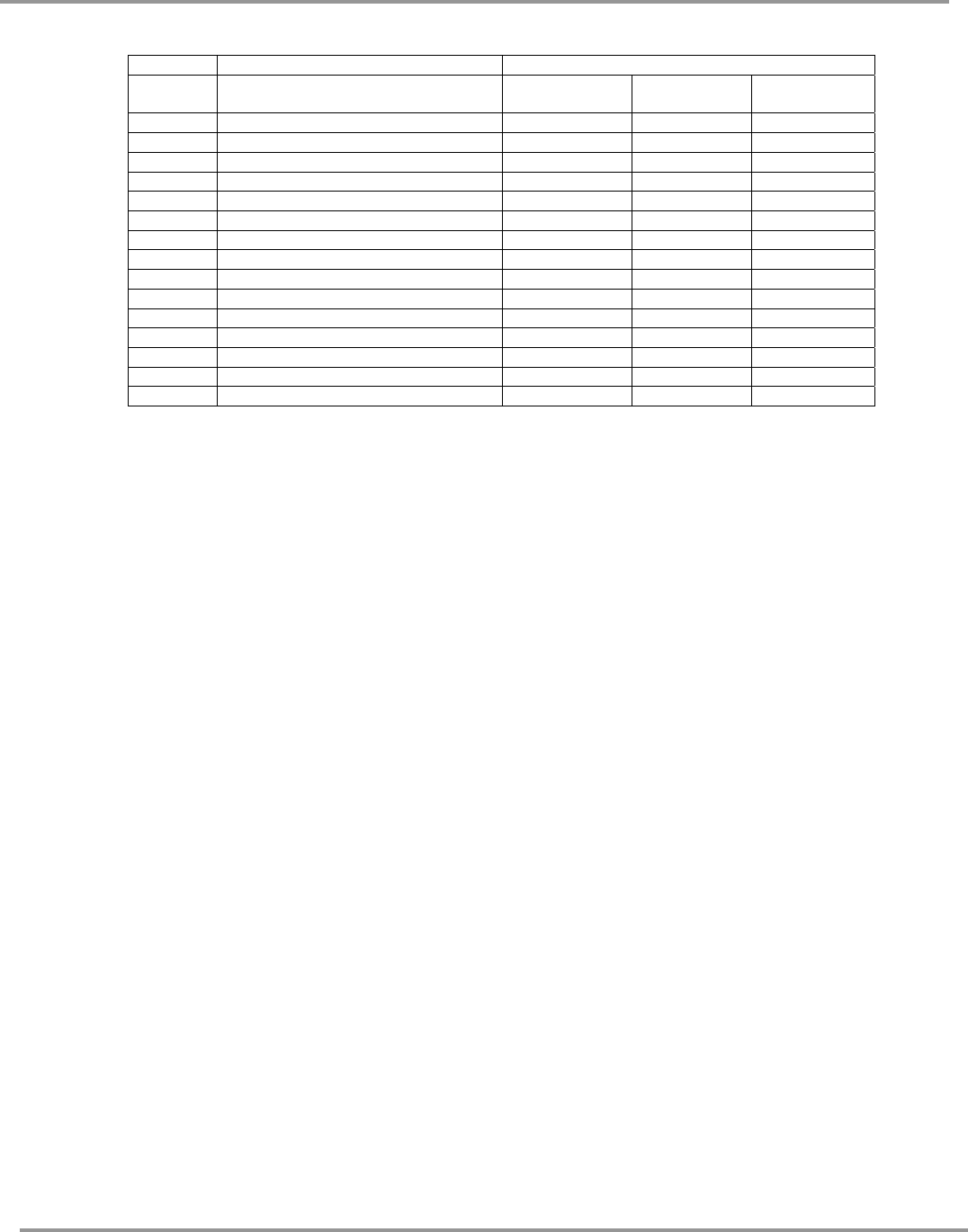Manual

Chapter 2: Prerequisites
Product Service 1-800-522-7658
7
Self-Closing 60% Sash Opening 18"
Hood
Size
Standard Model Description Face Velocity
Exhaust
Volume
Static
Pressure Loss
4' 48" Protector XLE Hood 60 fpm 310 CFM 0.03" H
2
O
80 fpm 420 CFM 0.06" H
2
O
100 fpm 520 CFM 0.09" H
2
O
5' 60" Protector XLE Hood 60 fpm 410 CFM 0.04" H
2
O
80 fpm 550 CFM 0.08" H
2
O
100 fpm 690 CFM 0.12" H
2
O
6' 72" Protector XLE Hood 60 fpm 510 CFM 0.06" H
2
O
80 fpm 680 CFM 0.10" H
2
O
100 fpm 850 CFM 0.15" H
2
O
7' 84" Protector XLE Hood 60 fpm 610 CFM 0.03" H
2
O
80 fpm 820 CFM 0.06" H
2
O
100 fpm 1020 CFM 0.09" H
2
O
8’ 96" Protector XLE Hood 60 fpm 710 CFM 0.04" H
2
O
80 fpm 940 CFM 0.06" H
2
O
100 fpm 1180 CFM 0.10" H
2
O
Proper blower selection can be determined from these exhaust requirements and
the total system static pressure loss. Contact Labconco Customer Service for
assistance in sizing a blower system.
Electrical Requirements
The Protector Hood models feature internal wiring for the fluorescent light
assembly and light switch. All internal wiring is terminated at the single point
wiring junction box for hook-up by a qualified electrician. The blower switch,
and light switch wires are also terminated at the single point wiring junction box
for hook-up by a qualified electrician. Refer to Chapter 3: Getting Started and
Appendix C: Protector XLE Specifications for the wiring diagram for proper
electrical installation.
Service Line Requirements
All service lines to the laboratory fume hood should be a minimum of 1/4"
outside diameter (3/8" diameter for a cold water gooseneck), copper (brass for
natural gas), and equipped with an easily accessible shut-off valve, should
disconnection be required. If the service line pressure exceeds 40 PSI, it must be
equipped with a pressure regulator to reduce the line pressure. Please check with
local codes for other requirements.
Space Requirements
The dimensions for the different models are shown in Appendix B: Protector XLE
Dimensions.
Your Next Step
After you have determined that the location you have selected accommodates the
installation and operational requirements of your fume hood, you are ready to
begin installation. Proceed to Chapter 3: Getting Started.










